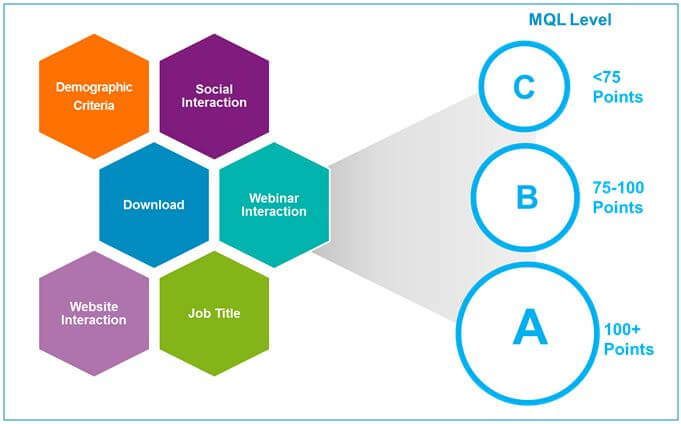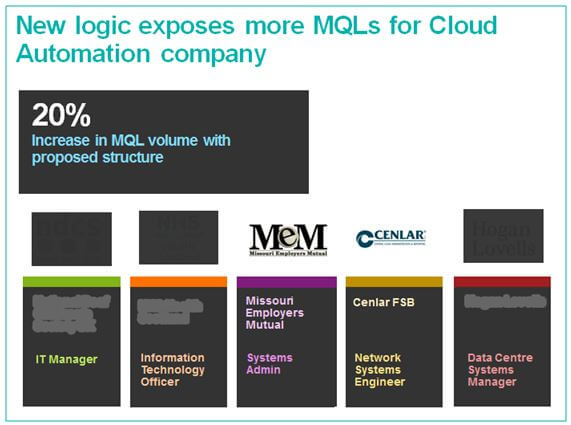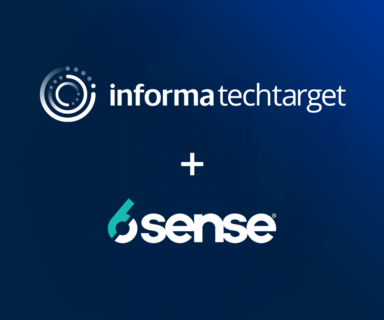 A few months back I had a senior marketer at one of the largest tech vendors tell me he considers leads generated from companies like TechTarget as early stage, awareness leads. And they only score them as late stage leads (or ones that achieve some sort of MQL status) once they engage with one of their webcast or later stage content on their website. Always up for a challenge, I did some due diligence on the true value of these “early stage, awareness leads”. When I matched them up to purchase intent insights from TechTarget’s Priority Engine platform, I was able to determine that 82% of the leads were from accounts that showed behaviors beyond general information gathering.
A few months back I had a senior marketer at one of the largest tech vendors tell me he considers leads generated from companies like TechTarget as early stage, awareness leads. And they only score them as late stage leads (or ones that achieve some sort of MQL status) once they engage with one of their webcast or later stage content on their website. Always up for a challenge, I did some due diligence on the true value of these “early stage, awareness leads”. When I matched them up to purchase intent insights from TechTarget’s Priority Engine platform, I was able to determine that 82% of the leads were from accounts that showed behaviors beyond general information gathering.
Not yet satisfied, I dug further and found that 56% showed a high level of activities with their competitors, 51% were interacting with late stage content from competitors (like demos and trials), and 62% had sustained high levels of activity with relevant content over the last month. And finally, most importantly, over 400 of their leads came from accounts that had verified and validated projects.
The example above illustrates at a basic level how the right data and insights can better expose the quality of the leads that you generate. The data also revealed the huge opportunity this specific vendor had to enhance their MQL and SQL scoring methodology. It is very important that you get the right inputs into your scoring models or else there is a huge risk that your organization will miss key opportunities to drive pipeline and revenue. These inputs must include data and insight from outside of your own ecosystem.
How to successfully update lead scoring based on purchase intent insight
As the head of a data-driven consulting organization at TechTarget, my team and I consistently work with clients to audit their current MQL scoring logic and make recommendations on what purchase intent insight they should add to enhance the value of leads generated.
 That being said, I would like to share some ways we have been able to successfully update lead scoring based on insight…
That being said, I would like to share some ways we have been able to successfully update lead scoring based on insight…
Generally speaking, our clients use a core set of known characteristics when scoring leads; they include factors like demographics, downloads with their branded content, webcast or event attendance and, depending on their MarTech stack, they may include scoring logic based on how a lead engages with their website.
As an example, when one of our clients added purchase intent insight to their MQL scores, they immediately added 20% more MQLs to their pipeline, including prospects from high profile accounts in targeted industries.

Attributing points for “Purchase Signals” activated
Depending on your scoring model, key purchase intent insight such as late stage engagements with other vendors, widespread and sustained activity from key prospects at specific accounts or activity generated by multiple stakeholders at an account could add anywhere from 10 – 20 additional points to your scoring model.
Also, week over week change in buying team activity of the account from which a lead was generated is another metric we add to MQL logic. Understanding how active an account is compared to other accounts is critical to activate your marketing and quickly turn MQLs to SQLs.
Adjusting your nurture strategy to optimize MQL scoring
In addition to purchase intent insight, making a few tweaks to your nurture strategy can produce additional MQL points. Whether it’s adding more “Call to Actions” in your copy, building late stage nurture tracks or accelerating the cadence of nurture emails, take a step back and see how you can optimize to get more from your existing pipeline.
Stay tuned for an upcoming post on purchase intent-driven optimization techniques for your nurture strategy.




